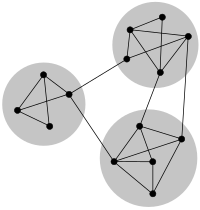
Longitudinal echocardiographic and clinical follow-up of patients undergoing mitral valve surgery without concomitant tricuspid valve repair
Sign Up to like & getrecommendations! Published in 2018 at "Netherlands Heart Journal"
DOI: 10.1007/s12471-018-1159-4
Abstract: BackgroundIn patients with mild to moderate functional tricuspid regurgitation (TR) and absence of right ventricular dysfunction or tricuspid annulus (TA) dilatation, there is currently no indication for concomitant tricuspid valve (TV) repair during elective mitral… read more here.
Keywords: follow; without concomitant; surgery without; valve ... See more keywords

Ophthalmic Emergency Department Visits: Factors Associated with Loss to Follow-up.
Sign Up to like & getrecommendations! Published in 2020 at "American journal of ophthalmology"
DOI: 10.1016/j.ajo.2020.08.038
Abstract: PURPOSE To describe follow-up rates for patients referred for outpatient ophthalmic care after emergency department (ED) discharge and identify patient and visit characteristics associated with loss to follow-up (LTFU). DESIGN Single-institution retrospective cohort study. METHODS… read more here.
Keywords: associated loss; ophthalmology; follow; emergency department ... See more keywords

12-Distinct between-network functional connectivity changes in Parkinson’s disease related to cognition: A follow-up study
Sign Up to like & getrecommendations! Published in 2018 at "Clinical Neurophysiology"
DOI: 10.1016/j.clinph.2018.01.032
Abstract: Introduction Patients with Parkinson’s disease (PD) show abnormal functional connectivity in large-scale brain networks. We explored resting state connectivity among the main networks, including the default mode network (DMN), dorsal attentional network (DAN), frontoparietal control… read more here.
Keywords: network; connectivity; follow; parkinson disease ... See more keywords

Effectiveness of intensive clinical and radiological follow-up in patients with surgically resected NSCLC. Analysis of 2661 patients from the prospective MAGRIT trial.
Sign Up to like & getrecommendations! Published in 2019 at "European journal of cancer"
DOI: 10.1016/j.ejca.2019.11.005
Abstract: BACKGROUND Limited evidence is available on effectiveness of clinicoradiological follow-up of early-stage NSCLC patients. MAGRIT was a phase III adjuvant RCT conducted in surgically resected stage IB-IIIA NSCLC patients, in which all participants had a… read more here.
Keywords: primary lung; surgically resected; detection; recurrence ... See more keywords

Does genomic sequencing early in the diagnostic trajectory make a difference? A follow-up study of clinical outcomes and cost-effectiveness
Sign Up to like & getrecommendations! Published in 2018 at "Genetics in Medicine"
DOI: 10.1038/s41436-018-0006-8
Abstract: PurposeTo systematically investigate the longer-term clinical and health economic impacts of genomic sequencing for rare-disease diagnoses.MethodsWe collected information on continuing diagnostic investigation, changes in management, cascade testing, and parental reproductive outcomes in 80 infants who… read more here.
Keywords: genomic sequencing; follow; sequencing early; diagnostic trajectory ... See more keywords

Growth dynamics of incidental meningiomas: A prospective long-term follow-up study.
Sign Up to like & getrecommendations! Published in 2022 at "Neuro-oncology practice"
DOI: 10.1093/nop/npac088
Abstract: Background There is no consensus on the management of incidental meningiomas. The literature on long-term growth dynamics is sparse and the natural history of these tumors remains to be illuminated. Methods We prospectively assessed long-term… read more here.
Keywords: long term; growth; follow; growth dynamics ... See more keywords

Short Follow-up Bias Confounds Estimates of the “Typical” Clinical Course of Susac Syndrome
Sign Up to like & getrecommendations! Published in 2017 at "Journal of Neuro-Ophthalmology"
DOI: 10.1097/wno.0000000000000472
Abstract: Background: To evaluate the validity of the prevailing concept that Susac syndrome (SS), a rare microvasculopathy of the brain, retina, and inner ear, is a self-limiting disease. Methods: We performed a literature search to identify… read more here.
Keywords: clinical course; susac syndrome; follow; course ... See more keywords

S‐ICD: Is it time for radiological follow‐ups?
Sign Up to like & getrecommendations! Published in 2021 at "Journal of Cardiovascular Electrophysiology"
DOI: 10.1111/jce.15208
Abstract: We present the case of an asymptomatic S-ICD lead migration in a 38-years-old woman, previously implanted in 2013 (3 incision technique, subcutaneous pocket, secondary prevention) and subsequent need of MRI compatible device. During the new… read more here.
Keywords: follow ups; follow; migration; icd time ... See more keywords

SHADOW study: Comparison of conventional clinical follow-up with clinician led video follow-up in newly diagnosed patients with intermediate and high grade glioma receiving adjuvant temozolomide therapy.
Sign Up to like & getrecommendations! Published in 2017 at "Journal of Clinical Oncology"
DOI: 10.1200/jco.2017.35.15_suppl.2024
Abstract: 2024Background: In patients with gliomas, nurse led telephonic follow-up was associated with high satisfaction rates and was a valid alternative approach to conventional hospital based follow-up. However, other alternative forms of follow-up have not been… read more here.
Keywords: grade glioma; high grade; intermediate high; follow ... See more keywords

A Comparative Follow-Up Study of Patients with Papillary Thyroid Carcinoma Associated or Not with Graves’ Disease
Sign Up to like & getrecommendations! Published in 2022 at "Diagnostics"
DOI: 10.3390/diagnostics12112801
Abstract: Whether papillary carcinoma (PC) behavior is more aggressive in Graves’ disease (GD) patients than PC cases without GD is controversial. We retrospectively enrolled 33 thyroidectomized PC/GD patients during long-term follow-up, 23/33 without risk factors at… read more here.
Keywords: follow; risk factors; risk; graves disease ... See more keywords